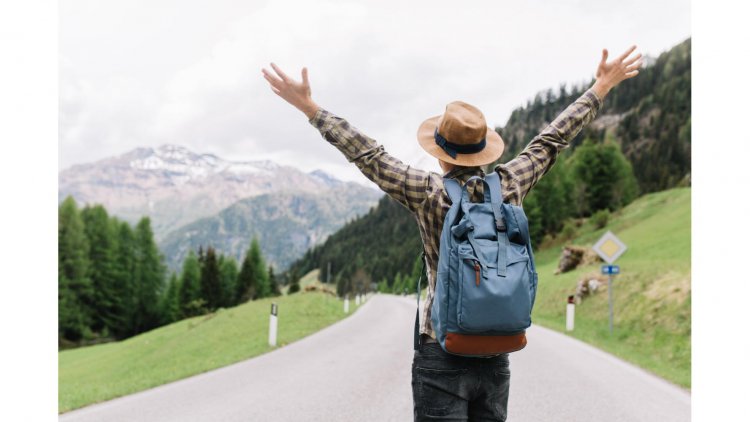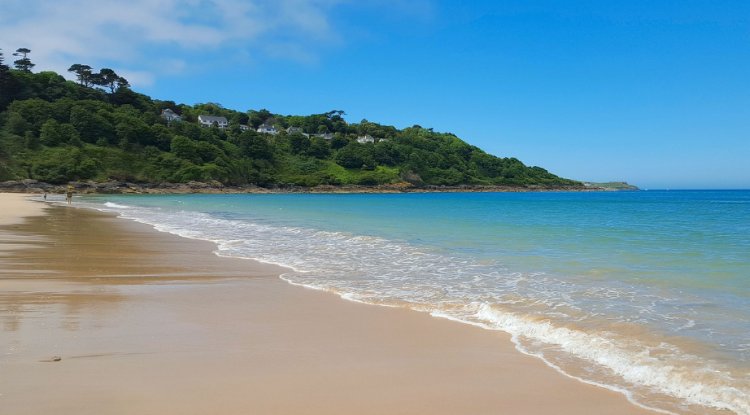7 Travel Tips for Savoring Slow Travel in a Fast-Paced World
In a world where everything is moving faster than ever—whether it's the pace of work, technology, or even the way we travel—slowing down and embracing a slower, more mindful approach to exploring new destinations has become a revolutionary act. Slow travel, in its essence, is about savoring the journey, experiencing places and cultures in-depth, and prioritizing meaningful encounters over ticking off tourist hotspots. It's about connecting with the places you visit and the people you meet in ways that fast-paced travel simply doesn't allow. The joy of slow travel lies in the simplicity and authenticity it offers, allowing you to experience a destination from a local's perspective, take the time to absorb your surroundings, and immerse yourself in the rhythm of life. To help you get the most out of your slow travel journey, here are seven tips that will ensure your trip is unforgettable, enriching, and fulfilling.

1. Embrace the Art of Staying Longer in One Place
One of the cornerstones of slow travel is staying longer in each destination. Instead of rushing from one place to another, take the time to settle into a location, get to know its rhythm, and discover hidden gems that most tourists miss.
The longer you stay in a place, the more likely you'll find its soul. You can wander through neighborhoods, visit local markets, and even take part in events or traditions that might not be available to a typical visitor. The extended stay gives you the opportunity to connect more deeply with locals, who are often eager to share their culture and stories once they realize you're not just another fleeting traveler.
Take your time exploring the less popular attractions and streets that aren't listed in every guidebook. The small cafes, the forgotten corners of the city, or the out-of-the-way hiking trails—these are the places where you’ll have the most meaningful encounters. Over time, you’ll begin to feel like you're part of the community, even if it’s just for a short while.
2. Slow Down Your Travel Pace with Local Transport
When it comes to slow travel, the mode of transport you choose is just as important as the destinations you visit. Instead of hopping on a high-speed train or booking a flight to your next spot, consider using slower, more local forms of transportation. This could mean taking a bus, a bicycle, a ferry, or even walking to explore your surroundings.
Public transportation offers a unique opportunity to observe life from a local perspective. You’ll get to see how people live day-to-day, and you’ll likely have some delightful interactions with fellow travelers or residents. And while it may take longer to get from one place to another, you’ll be rewarded with a deeper connection to the landscape and the culture.
Moreover, using local transport often opens up the chance to stop in smaller, lesser-known towns or villages that you might miss when flying over or speeding by. These smaller stops can be some of the most rewarding experiences of your trip, from sharing a meal with locals to discovering hidden historical sites.
3. Indulge in the Local Cuisine and Culinary Traditions
Food is one of the best ways to immerse yourself in a new culture, and slow travel gives you the luxury of time to truly savor the flavors of a destination. Rather than rushing through meals to move on to the next tourist site, use your time to indulge in local culinary traditions.
Consider visiting local markets, where you can shop for fresh produce, local delicacies, and artisanal products. If you're staying in one place for an extended period, try taking a cooking class, where you can learn how to make traditional dishes using ingredients found in the region. This hands-on experience can give you a deeper appreciation for the culture, as well as a lasting souvenir in the form of a recipe or a skill that will forever remind you of your trip.
In addition to cooking classes, many cities or rural areas offer food tours, allowing you to taste your way through different neighborhoods or regions. From street food to gourmet experiences, these tours are a great way to explore the local food scene in-depth and connect with the people who make it.
4. Immerse Yourself in Local Arts and Crafts
Another great way to deepen your slow travel experience is by immersing yourself in the local arts and crafts. Whether you're visiting a bustling city or a quiet village, art is often a reflection of the culture, history, and soul of a place.
Take the time to explore local galleries, craft markets, and artisan workshops. These are not only wonderful opportunities to see beautiful works of art, but they also allow you to interact with local artists, learn about their processes, and understand the history behind their creations. You might even find the perfect piece to take home as a reminder of your journey.
In many places, you can also try your hand at crafting, whether it's pottery, weaving, painting, or woodwork. Participating in these activities offers a more hands-on and personal connection to the destination, and it’s an enriching way to spend your time. The experience of creating something with your own hands can be both meditative and rewarding, as it allows you to connect with the culture on a deeper level.
5. Engage with Locals and Make Meaningful Connections
Slow travel is about fostering connections—not just seeing the sights. By spending more time in each destination, you'll have more opportunities to meet and engage with locals, creating friendships and gaining insights into their way of life.
Seek out places where locals spend their time, such as cafes, parks, or community centers. Strike up conversations with the people you meet—whether it's a shopkeeper, a fellow traveler, or someone you encounter on a walking tour. Many travelers are surprised by the warmth and openness of people when you make the effort to engage with them, even in small, everyday interactions.
Don’t be afraid to go beyond the usual tourist hotspots. Ask locals for recommendations or suggestions on places to visit, and you might end up discovering something extraordinary. These connections not only enrich your travel experience but also allow you to leave behind lasting memories and meaningful relationships. In some cases, these friendships might even extend beyond your trip, giving you a reason to return.
6. Prioritize Sustainability and Leave a Positive Impact
Slow travel goes hand-in-hand with sustainability. When you take your time in a place, you’re more likely to support local businesses, which helps stimulate the local economy in a way that mass tourism doesn't. Whether you’re staying at eco-friendly accommodations, purchasing handcrafted goods, or eating at family-run restaurants, you're making a direct and positive impact on the community.
Sustainable travel also means minimizing your environmental footprint. Consider traveling with less, avoiding single-use plastics, and choosing activities that respect the environment and wildlife. For example, hiking, biking, or kayaking are wonderful ways to enjoy nature while being mindful of the surrounding ecosystems.
Moreover, slow travel allows you to appreciate the beauty of nature in a way that doesn’t harm it. You can take the time to enjoy serene landscapes, spend hours hiking through forests, or simply sit and observe the natural world without rushing to the next destination.
7. Disconnect from Technology to Reconnect with Yourself
In a world that’s constantly connected, slow travel offers an opportunity to disconnect from technology and reconnect with yourself and your surroundings. While smartphones and social media can be helpful tools for navigation and sharing your experiences, they can also distract you from the present moment.
When you travel slowly, try to limit your screen time and focus on the world around you. Spend more time in nature, journaling, or simply taking in the sights, sounds, and smells of the place you’re visiting. This digital detox will not only allow you to be more mindful of your surroundings, but it will also help you to be more present in your interactions with others and with yourself.
If you need to use technology for planning or communication, try to set aside specific times during the day for checking emails or posting on social media. The rest of the time can be devoted to experiencing the place in a deeper and more meaningful way. By disconnecting, you'll be able to fully immerse yourself in the present moment, making your slow travel journey even more enriching.
In a world where speed dominates nearly every aspect of our lives, slow travel offers a refreshing antidote. By embracing a slower pace, travelers can engage in more meaningful and enriching experiences that leave a lasting impact, both personally and on the places they visit. These experiences go beyond mere sightseeing, allowing travelers to forge deeper connections with local cultures, nature, and themselves.
By practicing the art of slow travel, you’ll likely leave behind the stress and exhaustion that comes from rushing through your itinerary. Instead, you’ll walk away with a wealth of memories, relationships, and insights that can only come from truly experiencing the places you visit.
When traveling slowly, it's important to consider not just how you travel, but also the impact you have on your destination. With each step you take—whether it’s engaging in cultural exchanges, supporting local businesses, or being environmentally conscious—you contribute to the well-being of the places you explore.
If you have yet to dive into the world of slow travel, there’s no better time than now. The transformative power of taking the time to truly experience a destination at your own pace is unparalleled. And whether you’re roaming through cobbled streets, savoring a local dish, or simply taking in the beauty of a natural landscape, slow travel will surely make you feel more connected to the world than ever before.
Disclaimer: The travel information and recommendations on this blog are intended for general guidance and inspiration. Conditions and regulations can change quickly, so please verify all details with appropriate sources before making travel plans. We are not liable for any errors, omissions, or outcomes resulting from your use of this information. Travel involves inherent risks, and it's essential to prioritize your safety and well-being. Always travel with adequate insurance and take necessary precautions.
What's Your Reaction?





















